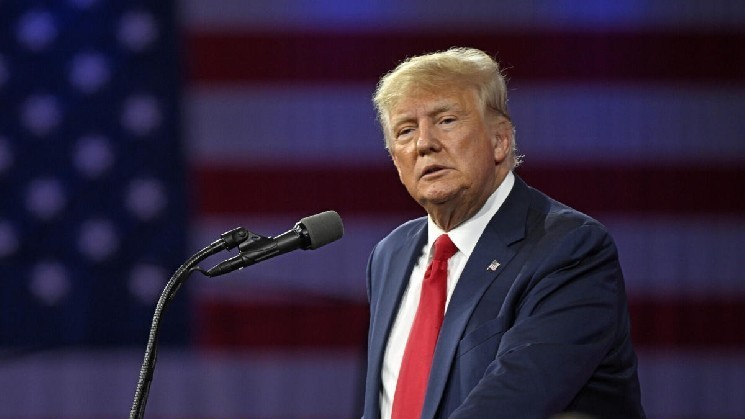Supreme Court Fast-Tracks Trump’s Global Tariff Appeal in Landmark Trade Case
High Court to Hear Arguments on Controversial Import Duties as Economic Stakes Soar
In a significant development that could reshape U.S. trade policy and impact global markets, the Supreme Court has agreed to expedite consideration of President Donald Trump’s appeal regarding controversial global tariffs previously deemed unlawful by a lower court. The nation’s highest judicial body will hear arguments from both sides during the first week of November, underscoring the case’s urgency and far-reaching implications for international commerce and domestic economic stability.
The Supreme Court’s decision to fast-track this appeal comes amid growing tensions over Trump’s aggressive trade policies, particularly the sweeping “Independence Day” tariffs announced in April and targeted duties ostensibly designed to combat drug trafficking from China, Mexico, and Canada. These measures represent a cornerstone of the administration’s “America First” economic strategy but have sparked fierce debate among economists, trade experts, and international partners about their effectiveness and legality.
“President Trump is utilizing powers expressly granted by law to protect our national security and economic interests,” White House spokesperson Kush Desai asserted in a statement following the Supreme Court’s announcement. “We are confident the Court will recognize the President’s lawful authority in these matters and rule accordingly.” This optimistic stance comes despite a lower court’s determination that Trump’s implementation of these tariffs under the International Emergency Economic Powers Act (IEEPA) constituted an overreach of executive authority—though notably, that same court permitted the duties to remain in effect pending final adjudication.
Economic Impact and Legal Challenges Mount as Tariff Collections Reach Staggering Levels
The financial implications of this case cannot be overstated. According to recent data from U.S. Customs and Border Protection, a staggering $475 billion in taxes has already been collected in fiscal year 2025, with approximately $210 billion stemming directly from the tariffs currently under legal challenge. The Trump administration has emphasized the time-sensitive nature of the case in its expedition request, warning that between $750 billion and $1 trillion in additional tariffs could be collected if a final decision is delayed until June 2025. Administration officials further caution that any potential requirement to reimburse these massive sums could trigger significant economic instability and market disruption.
While the White House frames these tariffs as essential safeguards for American industry and national security, many economic experts paint a decidedly different picture. Numerous analyses from independent economists suggest that sustained high tariffs typically result in substantial job losses, particularly within construction and manufacturing sectors—the very industries the policies purportedly aim to protect. Moreover, these trade restrictions often contribute to inflationary pressures by increasing costs for imported components and finished goods, ultimately raising prices for American consumers already struggling with affordability concerns. The continuation of these contested tariffs pending the Court’s final determination could amplify these economic risks, potentially complicating recovery efforts and market stability.
The legal battle centers on the scope of presidential authority under the IEEPA, which grants the executive branch significant powers to address unusual and extraordinary threats to national security, foreign policy, or the economy originating from outside the United States. Critics argue that Trump has interpreted these powers too broadly, effectively circumventing Congress’s constitutional authority over international commerce. Supporters counter that modern economic challenges and national security threats necessitate precisely this kind of executive flexibility, particularly regarding trade relationships with strategic competitors.
International Relations and Global Trade Framework at Crossroads
This case transcends mere economic policy and strikes at fundamental questions about the separation of powers, executive authority, and America’s role in the international trading system. The Supreme Court’s ultimate ruling could either affirm expansive presidential powers in trade matters or significantly constrain them, with profound implications for future administrations regardless of political affiliation. Trade experts note that a decision upholding these broad tariff authorities would represent a significant departure from decades of established practice in which major trade actions typically required explicit congressional approval or followed specific statutory frameworks like Section 301 investigations.
The international dimensions of this case are equally consequential. Trading partners, particularly those directly targeted by the contested duties, are closely monitoring these proceedings as indicators of America’s future trade posture. Diplomatic sources suggest that several major economies have already begun formulating contingency plans for potential retaliatory measures should the Court uphold the tariffs, raising concerns about a possible escalation into broader trade conflicts. Multilateral institutions including the World Trade Organization may also face challenges in maintaining global trade frameworks if the Court endorses unilateral emergency-based tariff actions that potentially circumvent international agreements.
For American businesses and consumers, the stakes could hardly be higher. Companies with global supply chains face continued uncertainty about input costs and market access, complicating investment decisions and strategic planning. Retailers and consumer goods manufacturers report already passing along tariff-related price increases to customers, contributing to affordability challenges across various sectors. Agricultural exporters remain particularly vulnerable to retaliatory measures from countries targeted by U.S. tariffs, with several farm state representatives expressing concern about potential market losses regardless of the legal outcome.
Economic Experts Warn of Potential Consequences as November Hearing Approaches
As the November hearing approaches, both supporters and critics are marshaling their arguments for what promises to be one of the most consequential trade-related cases to reach the Supreme Court in decades. Legal scholars note that the Court’s current composition, with its preference for textual interpretation and historical analysis, makes the outcome difficult to predict. The justices will likely scrutinize not only the statutory language of the IEEPA but also its legislative history and Congress’s intent regarding executive trade authorities when the law was enacted.
Whatever the outcome, this case represents a pivotal moment in American trade policy with implications that will extend far beyond the current administration. The Court’s decision will establish important precedents regarding the balance of power between the executive and legislative branches in foreign commerce matters and may fundamentally reshape how future presidents approach trade negotiations and enforcement actions. For businesses, investors, and trading partners, the ruling will provide much-needed clarity about the rules governing America’s engagement with the global economy—though whether that clarity brings stability or further disruption remains to be seen.
In the meantime, as billions in contested tariffs continue to be collected and economic uncertainties persist, stakeholders across the economic spectrum can only watch and wait as the nation’s highest court prepares to address one of the most consequential trade disputes in recent memory. The November hearing will likely attract extraordinary attention from domestic and international observers alike, all seeking insights into how the Court might navigate this complex intersection of economic policy, executive authority, and international relations—and ultimately, what the decision will mean for America’s place in the global trading system for years to come.















